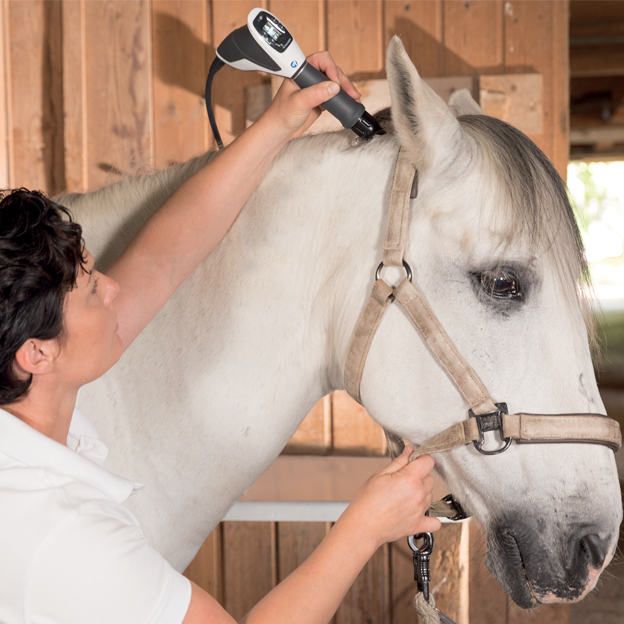Why Equine Therapy is Coming To Be a Preferred Choice for Emotional Health
Why Equine Therapy is Coming To Be a Preferred Choice for Emotional Health
Blog Article
Reviewing the Effectiveness of Laser Therapy in Equine Treatment for Injury Rehabilitation
The evaluation of laser therapy's effectiveness in equine injury rehabilitation depends upon multiple aspects, consisting of healing time, discomfort mitigation, and cells regeneration. Clinical researches suggest significant improvements in problems like tendonitis and osteoarthritis, attributed to enhanced mobile function and raised ATP production. Vets often observe premium results with laser treatment contrasted to conventional techniques, positioning it as an essential component in equine treatment. Nevertheless, the necessity for constant surveillance and customized therapy strategies can not be overstated. What certain professional proof supports these insurance claims, and how do veterinarians carry out these methods in method?
Understanding Laser Treatment
Laser therapy has come to be a crucial tool in veterinary medication, especially in the treatment of equine conditions. Known for its non-invasive nature and efficiency, laser treatment includes the application of particular wavelengths of light to stimulate cells fixing and minimize inflammation. This therapeutic modality is increasingly favored for its capability to speed up the healing process in steeds struggling with a variety of bone and joint injuries and chronic conditions.
The main mechanism behind laser therapy is its ability to improve mobile functions. In addition, laser therapy promotes vasodilation, boosting blood circulation and oxygen delivery to broken tissues, thus quickening recovery.
In equine medication, laser therapy is particularly useful for problems such as tendonitis, osteo arthritis, and wound healing. The strategy is admired for its pain-relieving residential properties, permitting steeds to regain mobility and feature a lot more swiftly. Veterinarians additionally value its marginal negative effects compared to various other therapy methods, making it a trusted and risk-free option for equine treatment.

Just How Laser Treatment Functions

Upon absorption, these photons activate a series of biochemical changes, boosting mitochondrial feature and leading to boosted adenosine triphosphate (ATP) manufacturing. This rise in ATP speeds up mobile metabolic rate, advertising cells fixing and regrowth. Additionally, laser treatment regulates inflammatory reactions by impacting cytokine levels and reducing oxidative stress and anxiety, thus relieving pain and swelling.
An additional substantial element of laser therapy is its function in boosting microcirculation. The therapy promotes vasodilation, enhancing blood flow and oxygen shipment to broken tissues (Equine Therapy). This promotes the elimination of mobile debris and supports the proliferation of fibroblasts and collagen synthesis, critical for wound recovery
Professional Proof
The effectiveness of laser therapy in equine therapy has actually been confirmed through numerous medical researches, showcasing its restorative possible across a variety of conditions. A research study performed by Turner et al. (2012) demonstrated that equines treated with low-level laser treatment (LLLT) for tendon injuries displayed increased recovery compared to those getting conventional treatments.
In a similar way, study by Johnson and colleagues (2015) concentrated on equine muscle injuries, disclosing that laser treatment considerably accelerated muscular tissue fiber regeneration and lowered muscular tissue stiffness. Scientific view publisher site analyses have revealed that laser therapy can alleviate chronic problems such as osteoarthritis.
Veterinarian Insights

Vets additionally appreciate the adaptability of laser therapy. She directs out that laser therapy can be tailored to the certain demands of each equine, making certain optimum end results.
In addition, vets value the capability to incorporate laser treatment with various other therapy modalities. This multimodal method can improve general treatment effectiveness, supplying a thorough solution for equine rehabilitation. Such endorsements from skilled specialists highlight the expanding acceptance and application of laser treatment in equine medicine.
Practical Considerations
A crucial element of implementing laser treatment in equine therapy involves recognizing the functional considerations that guarantee its effectiveness and safety. It is crucial to select the ideal laser device, as numerous types differ in wavelength, power, and infiltration deepness. Vets should be fluent go right here in these criteria to tailor therapy methods properly to every injury type
Additionally, the frequency and duration of laser treatment sessions need cautious planning to make the most of healing advantages while reducing any prospective unfavorable impacts. Constant tracking of the horse's action to treatment can assist necessary changes in the therapy program. Developing a secure and regulated atmosphere during treatments is likewise important to stop unintended exposure to laser emissions, which could damage both the steed and the trainer.
Educating and accreditation of personnel providing laser treatment are vital to make sure view website correct method and to copyright security requirements. Additionally, maintaining precise records of each session, consisting of laser settings and observed end results, is crucial for evaluating the overall effectiveness of the treatment and for making data-driven decisions.
Conclusion
Laser treatment has actually arised as a reliable method in equine injury recovery, offering substantial benefits in healing time, discomfort relief, and tissue recovery. Medical researches underscore significant enhancements in problems such as tendonitis and osteoarthritis, associated to boosted cellular function and boosted ATP manufacturing. Vet observations prove these findings, highlighting exceptional end results contrasted to traditional therapies. For ideal results, continuous monitoring and individualized therapy protocols continue to be essential in leveraging the complete capacity of laser therapy in equine care.
Report this page